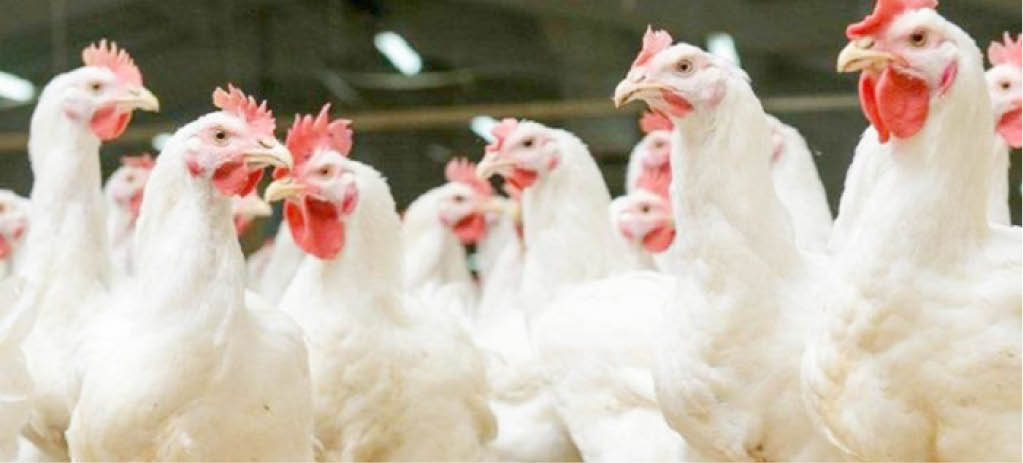- …as RMRDC, NVRI develop water-based thermostable vaccines
Poultry rearing is one of the most important activities in the agricultural sector of the country. It contributes substantially to the volume of employment, poverty alleviation and internal trade in the country.
Experts believe poultry is a major source of national income and provides about 4 – 5% of the nation’s gross domestic product (GDP) with a worth of about $650 million annually.
However, poultry production systems are faced with myriads of challenges amongst which disease is topmost. Notable among the diseases afflicting the industry is incessant outbreaks of Newcastle Disease virus in unvaccinated and sporadically in vaccinated flocks.
The Virulent Newcastle Disease virus (VND) was formerly known as Exotic Newcastle Disease. It is a contagious viral avian disease, affecting many domestic and wild bird species.
A document by the Raw Material Research and Development Council (RMRDC) stated that the disease is transmissible to humans, where it leads to a mild fever and/or conjunctivitis in rare cases.
Its effects, according to the document, are most notable in domestic poultry due to their high susceptibility and the potential to develop into an epizootic in the poultry industry.
‘’It is endemic to many countries. No treatment for NDV is known, but the use of prophylactic vaccines and sanitary measures reduces the likelihood of outbreaks. The causal agent, Newcastle Disease Virus (NDV), is a variant of avian paramyxovirus 1 (APMV-1), a negative-sense, single-stranded RNA virus. NDV/APMV-1 which belongs to the genus Avulavirus in the family Paramyxoviridae.,’’ the document revealed.
How the virus transmits
Prof. Hussaini D. Ibrahim, RMRDC’s Director-General said the transmission occurs by exposure to fecal and other excretions from infected birds and through contact with contaminated food, water, equipment and clothing.
According to him, infected birds shed virus in exhaled air, respiratory discharges, and faeces. Virus is shed during the incubation and the clinical stage, and during convalescence.
He said the virus may also be present in eggs laid during clinical disease and in all parts of the carcass during acute infections.
He said NDV can survive for several weeks in a warm and humid environment on birds’ feathers, manure, and other materials and it can survive indefinitely in frozen materials. ‘’Smuggled pet birds, especially Amazon parrots from Latin America, pose a great risk of introducing NDV. Amazon parrots are carriers of the disease, but do not show symptoms, and are capable of shedding NDV for more than 400 days,’’ he said.
The DG noted that the incubation period for the disease ranges from four to six days, adding that an infected bird may exhibit several signs, including respiratory signs such as gasping and coughing, nervous signs among which are depression, in appetence, muscular tremors, drooping wings, twisting of head and neck, circling, complete paralysis, swelling of the tissues around the eyes and neck, greenish, watery diarrhea, misshapen, rough- or thin-shelled eggs and reduced egg production.
In acute cases, he said, sudden death is common but that in flocks with good immunity, the signs are mild and progressive, and are followed after seven days by nervous symptoms, especially twisted heads.
The DG said spread is slower if the fecal-oral route is the primary means of transmission, particularly for caged birds. Young birds are the most susceptible. Observed signs depend on whether the infecting virus has a predilection for respiratory, digestive, or nervous systems. Mortality is variable but can be as high as 100% with vNDV infections.
Prof. Ibrahim revealed that well-vaccinated birds may not show any sign of being infected except for a decrease in egg production, but the birds will shed virus in saliva and faeces. Poorly vaccinated birds may develop torticollis, ataxia, or body and head tremors, 10 –14 days after infection and may recover with supportive care.
The period the disease usually breaks
According Professor Ibrahim, a three-year prospective study conducted in south eastern Nigeria involving a clinical and laboratory-based test, ND outbreaks were observed to peak during the dry harmattan period (November to February) with another marginal peak recorded during the height of the rainy season (June to July).
In other reports, he said high prevalence of ND outbreaks was also observed mostly in the dry harmattan period in which stress and cold associated with the weather are responsible for the occurrence.
How can farmers handle the disease?
The RMRDC’s DG noted that over the years, Newcastle Disease (ND) has defied all available control measures. The disease has remained at the fore front of infectious diseases afflicting poultry production after avian influenza.
Despite the continuous global use of million doses of ND vaccine annually, the DG said the causative pathogen has continued to evolve, becoming a threat to both unvaccinated and vaccinated flocks.
Nevertheless, he said, biosecurity and vaccination are veritable tools that are used in combating the disease. Various types of vaccines are in use in the country for the control of ND.
Notable among the vaccines are live attenuated Lasota and Hitchner B1 strains which are commonly used in commercial poultry.
In addition, he said inactivated oil-emulsion vaccines, which come as a single package or in combination with other poultry agents, are often used by some farmers. The vaccination regimen is routinely undertaken in commercial poultry.
The locally made vaccines by the RMRDC and NVRI
Professor Ibrahim said thermostable NDV-I2 and V4 vaccine strains have been successfully introduced into Nigeria through the collaboration between RMRDC and the National Veterinary Research Institute (NVRI), Vom, which he said, are being used in combating Newcastle Disease threat for free-range chickens with good protection level.
‘’In Nigeria, the free-range chickens have been implicated in harbouring velogenic strains of the virus which have been considered a threat to the commercial poultry. As a result, Newcastle Disease (ND) has been recognised as the major constraint to rural poultry production in Nigeria,’’ he said.
However, considering the fact that the vaccines currently in use come in large dose units and are targeted at large commercial flocks with little or no relevance in small number village flocks, and the need to maintain a cold chain to ensure the viability of the vaccine, it is almost impossible to use them effectively in village settings. This necessitated the need for the development of thermostable vaccines.
‘’As a result of this, RMRDC collaborated with the National Veterinary Research Institute, Vom, to develop a water-based thermostable vaccine for control of the disease. The thermostable vaccine (NDVI2) on laboratory analysis provided a better protection to commercial and rural poultry via intra-ocular, intra-muscular and drinking water, compared to NDVI.,’’ the DG said.
He added that field trial of the thermostable Newcastle Disease Vaccine (NDV) had been carried out in both rural poultry and commercial poultry in most parts of the country, especially, in the northern part.
‘’This was to establish the effect on the productivity of both rural poultry and commercial poultry, breed, feeding, medication and general husbandry. The result indicated that the vaccine can be used to control the disease. As a result of this collaboration, the two organisations and poultry farmers carried out extensive studies on the utilisation of the vaccine to control ND in Nigeria. This has led to the mass production of the vaccine at NVRI, Vom,’’ he said.
He noted that the development of vaccines is a major breakthrough, as this can be used with small number of flocks where electricity to maintain a cold chain is in short supply or not available at all as its thermal stability is an advantage. Also, its water-based administration method makes it even more adaptable.
This vaccine can stand at 45°C for up to one week. The product is now available in lyophilised form at NVRI, the collaborating institution, and it is already being popularised among rural farmers.




